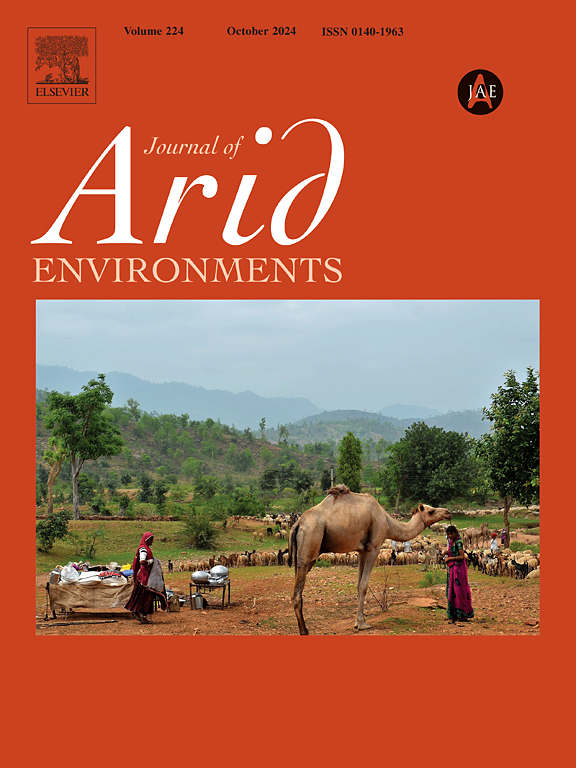Biophysical and environmental changes in livestock disturbed areas in a South-American desert woodland. Potential implications for natural or assisted re-vegetation
IF 2.6
3区 环境科学与生态学
Q2 ECOLOGY
引用次数: 0
Abstract
Livestock breeding is among the main productive activities in drylands, often reducing vegetation cover, impacting the surrounding environment and plant regeneration. However, the magnitude of the change in environmental variables in response to vegetation changes has rarely been assessed in arid ecosystems. Our objective was to quantify changes in vegetation cover and floristic composition, as well as the associated microclimatic and edaphic variables that can challenge the ecosystem's restorative capacity in the Monte desert woodland of Argentina. We surveyed sites at 600 (disturbed) and 2000 m (relatively undisturbed) from five rural livestock posts. We found that disturbed sites had lower vegetation cover, altered floristic composition and more stressful environmental conditions for plants. The widest difference was a 50 % decrease in soil NO3−-N concentration, coupled with a 30 % increase in solar radiation (mainly UV-B), a 4 °C increase in air temperature, and coarser soil texture. Potential constraints to plant regeneration would be therefore not only related to low water availability, but also to lower fertility, higher radiation and temperature. Decisions on species selection to restore these ecosystems must therefore consider plant traits related to nutrient use and uptake capacity, and resistance to photo-oxidative stress, in addition to drought resistance.
南美荒漠林地家畜干扰区生物物理和环境变化对自然或辅助植被重建的潜在影响
畜牧业是旱地的主要生产活动之一,往往会减少植被覆盖,影响周围环境和植物再生。然而,在干旱生态系统中,很少对响应植被变化的环境变量的变化幅度进行评估。我们的目标是量化植被覆盖和植物区系组成的变化,以及相关的小气候和土壤变量,这些变量可能会挑战阿根廷蒙特沙漠林地生态系统的恢复能力。我们调查了5个农村牲畜站600米(受干扰)和2000米(相对未受干扰)的地点。我们发现,受干扰的地点植被覆盖度较低,植物区系组成发生变化,植物的环境条件更加紧张。差异最大的是土壤NO3−-N浓度下降50%,同时太阳辐射(主要是UV-B)增加30%,气温升高4°C,土壤质地更粗糙。因此,对植物再生的潜在限制不仅与水供应不足有关,而且与较低的肥力、较高的辐射和温度有关。因此,恢复这些生态系统的物种选择决策必须考虑与养分利用和吸收能力有关的植物性状,以及对光氧化胁迫的抗性,以及抗旱性。
本文章由计算机程序翻译,如有差异,请以英文原文为准。
求助全文
约1分钟内获得全文
求助全文
来源期刊

Journal of Arid Environments
环境科学-环境科学
CiteScore
5.70
自引率
3.70%
发文量
144
审稿时长
55 days
期刊介绍:
The Journal of Arid Environments is an international journal publishing original scientific and technical research articles on physical, biological and cultural aspects of arid, semi-arid, and desert environments. As a forum of multi-disciplinary and interdisciplinary dialogue it addresses research on all aspects of arid environments and their past, present and future use.
 求助内容:
求助内容: 应助结果提醒方式:
应助结果提醒方式:


